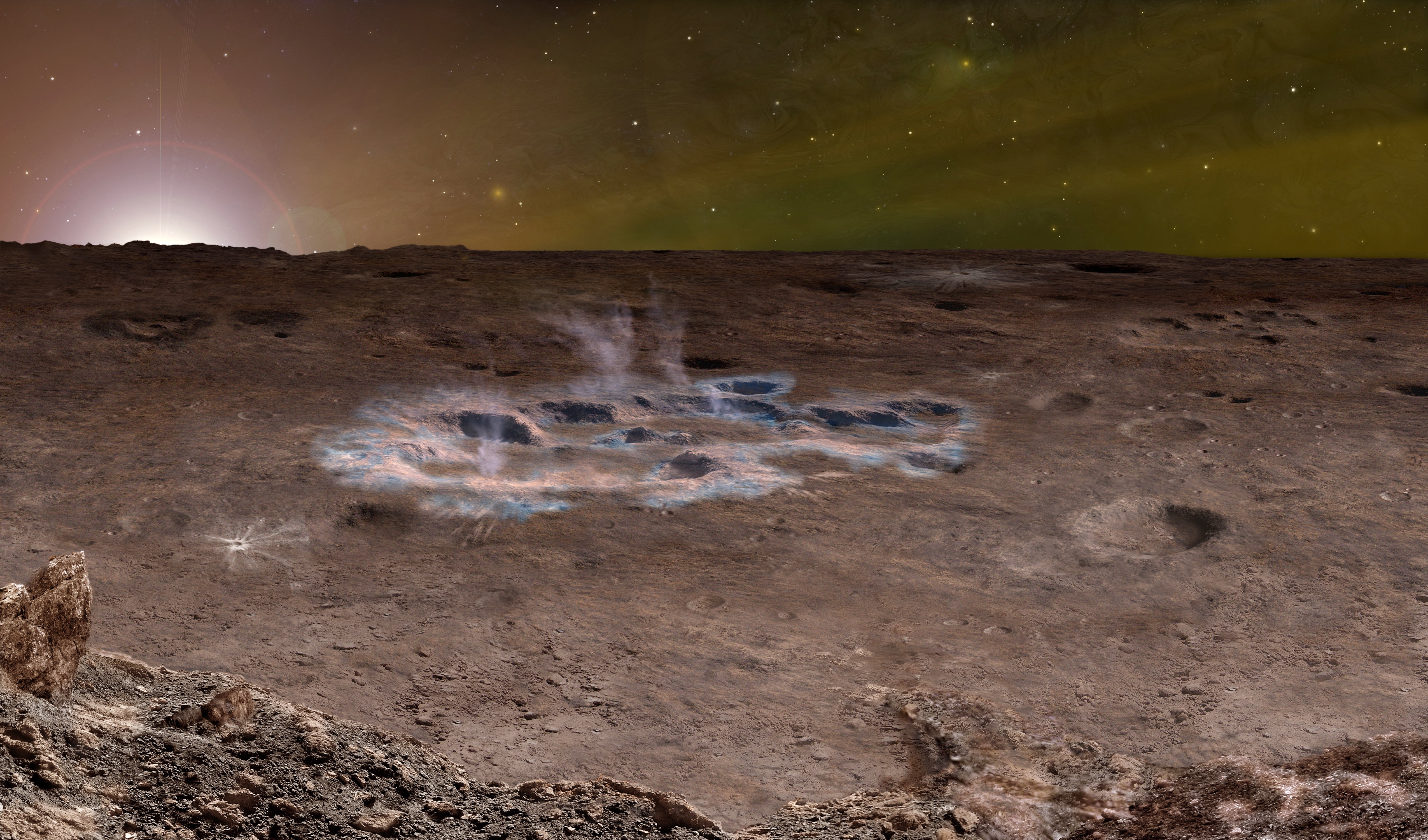
The more we discover about Mercury, the weirder it seems. For instance, despite the fact that daytime temperatures there soar to 800 degrees Fahrenheit (427 degrees Celsius), ice encases the shadowed crater floors on its poles. The tiny planet should be devoid of the ice and other volatiles — compounds that can easily vaporize — that stuck to the larger terrestrial planets. After all, it has spent most of its existence close to the Sun, where fierce solar winds strip away atmosphere and even solid rock over time. But in fact, Mercury is rich in volatiles, perhaps more so than early Earth or Venus.
Those puzzling compounds (like water, carbon monoxide, and sodium) have led to some of the strangest features in the solar system. As vapors break through the surface of the planet, they leave structures typical of volcanic eruptions. These include vents, fissures, flows of material, chains of collapsed pits, and raised mounds topped by craters.
But strangest of all are Mercury’s hollows, unique sunken regions encircled by bright halos. First noticed as bright splotches decades ago, their apparent volcanic nature was revealed by NASA’s MESSENGER mission, which orbited the planet from 2011 to 2015. The problem with these hollows is that they shouldn’t be there — Mercury’s interior gases should have disappeared long ago, and the hollows are geologically fresh.
Resolving this contradiction is forcing scientists to contemplate some fundamental mysteries about how Mercury — and the solar system itself — formed. As Mercury expert Mark Robinson of Arizona State University quips, “I think the MESSENGER mission proved that Mercury cannot exist!”
Alien landscape
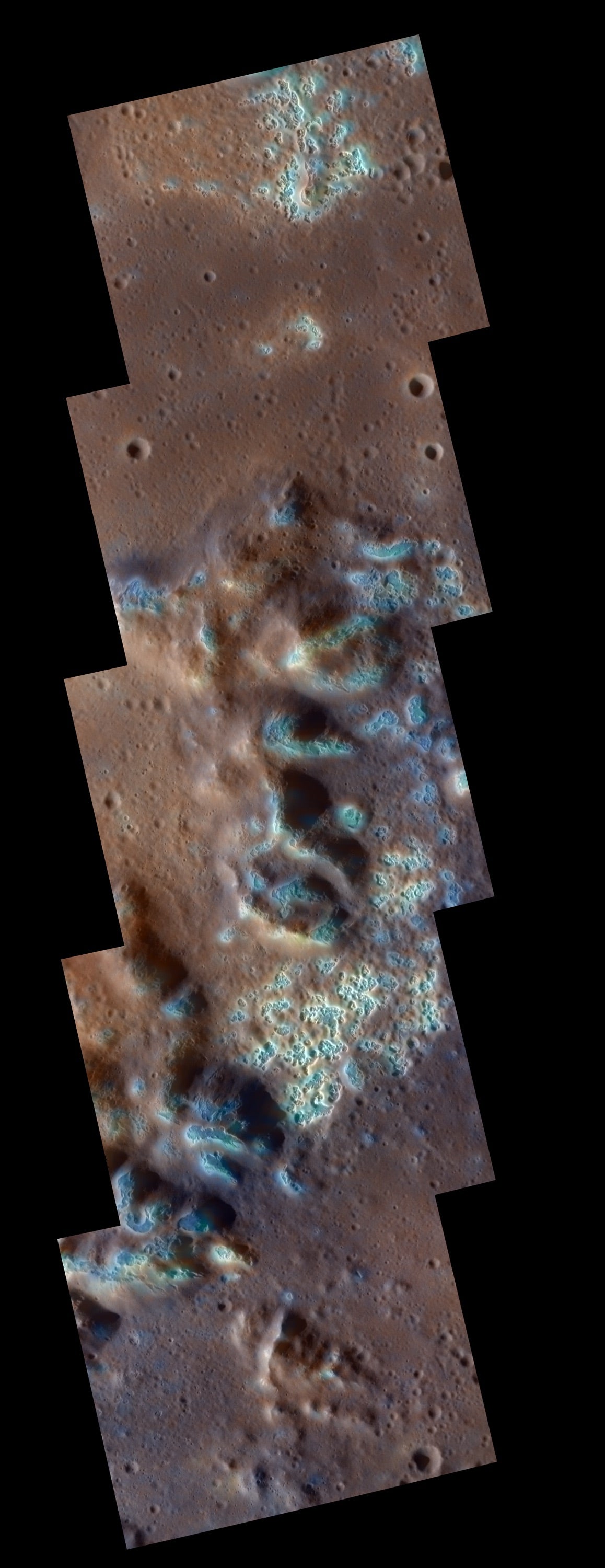
Beneath its rarified skies, Mercury displays alien landscapes, both elegant and desolate, that reflect several geological processes.
Dramatic cliffs, called rupes, span hundreds of miles and tower over a mile high in places. These record Mercury’s planetary contraction: Scientists estimate that the planet’s radius may have shrunk by as much as 4.4 miles (7 kilometers) since it formed. It is probably still contracting even today.
Mercury’s surface also displays a record of the assault it has taken under a drizzle of rock, metal, and ice. Meteorites, asteroids, and comets have left dramatic rayed craters and colossalimpact scars. The largest is the Caloris basin, a 950-mile-wide (1,525 km) wound surrounded by mile-high mountains. Some basins have multiple concentric mountain chains like ripples in a frozen pond.
And then there is Mercury’s history of volcanism. Major flows and eruptions of molten rock appear to have ceased around 3.5 billion years ago. After that time, Mercury’s global contraction pinched off many of the volcanic sites. But smaller-scale volcanism carried on at locations where the crust was weakened, most commonly by impacts or faulting of the crust. Among the plethora of volcanic features parading across the face of Mercury are the enigmatic hollows. Mercury’s hollows were first spotted in images taken by Mariner 10 during its three flybys of the planet in 1974 and 1975. But the resolution of its images was too low to understand what Mariner scientists then classified as “bright, ill-defined patches.”
A 2014 paper in the journal Icarus by a team led by Rebecca Thomas, then a graduate student at The Open University in Milton Keynes, U.K., defines the hollows as “sub-kilometer scale, shallow, flat-floored, steep-sided rimless depressions typically surrounded by bright deposits and generally occurring in impact craters.” The hollows often congregate within craters, sometimes eating away the summits of central peaks or crater rims. Chains of smaller depressions melt into each other, forming wide areas of shallow, irregular cavities. They range in size from tens of yards to over a mile (1.6 km).
The authors and others have noted that the hollows are quite different from volcanic collapse pits, which are plentiful across the little planet. Volcanic pits are deep with rounded edges and irregular, rough floors. But the exotic hollows are shallow with smooth floors, scalloped margins, and often a blue coloration. Coronas of bright material composed of unknown substances surround these mysterious pits.
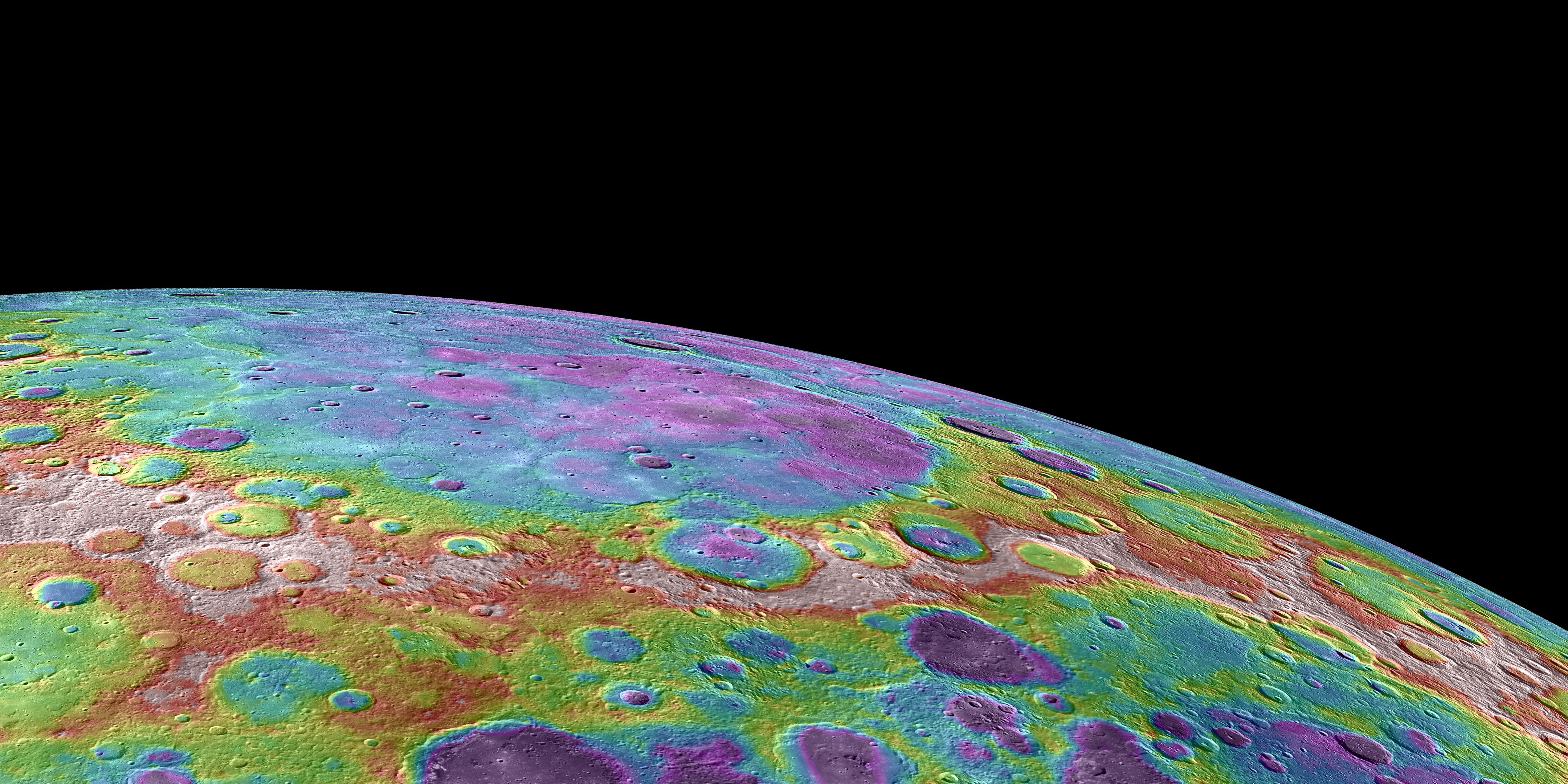
Fresh features
By looking at hollows in regions of varying age, scientists can piece together how these features evolve. The indentations appear to start as a localized darkening of the surface. A central region begins to collapse into several pits and as it does, a brightening builds around the assemblage of hollows. This brightening is often quite dramatic, developing into a halo surrounding the depressions. As the hollows age, the activity that led to the halos trails off and the ground darkens again. Over time, the surface relaxes. Micrometeorites and solar wind erode the walls until the hollows fade away.
Investigators have come to realize that hollows are fairly recent in Mercury’s geological record. The youngest craters on Mercury have crisp rims and bright rays. Prominent hollows reside within many craters, including Balanchine, Degas, and Dominici. The hollows that have been imaged in detail lack any craters overlaying them, so they occurred after Mercury’s major cratering eras.
The hollows appear almost exclusively in Mercury’s darkest areas, blanketed by what scientists call Low Reflectance Material (LRM). Something about the LRM regions must be favorable for hollow formation. LRM is high in magnesium, calcium, and sulfur, so it may be that one or more of these elements are involved in creating hollows. LRM also has a greater abundance of carbon, probably in the form of graphite — another substance that may be responsible for the creation of hollows. While it is evident that hollows form through some type of sublimation (when a solid turns directly into vapor) that causes the surface to sink, the specific mechanism is still a mystery.
“It’s clear that the planet’s building blocks included materials that formed at relatively low temperatures,” says cosmochemist Larry Nittler of Arizona State University in Tempe, Arizona. But were they there when the planet formed — or were they delivered later in the planet’s
life by impacting comets? “It could well be that many of the planetesimals that formed Mercury formed further out in the [protoplanetary] disk,” says Nittler. “The ice and organic volatiles in polar craters are certainly a sign of recent delivery, likely by comets. But Mercury is also relatively rich in moderately volatile rock-forming elements like sodium, potassium, and chlorine, which must reflect how the planet formed.” In short, he says, “We really don’t know … why it is so volatile-rich.”
Some possibilities can be found in planet formation models, which show that early in the solar system’s history, Jupiter, Saturn, Uranus, and Neptune migrated toward and away from the inner solar system. As they did so, their gravity acted as snowplows, moving material around the solar system.
One model, called the Grand Tack, indicates that Jupiter robbed Mars and its surroundings of icy and rocky planet building material, sending it toward the inner system. During its planetary migration, Jupiter also cast many of the most water-rich asteroids inward, delivering water to the terrestrial planets. This would explain the diminutive size of Mars, the structure of the asteroid belt, the birth of terrestrial seas — and Mercury’s abundance of volatile materials.
Analysts have also been discussing a model in which Mercury itself formed much farther out and was transported to its current orbit.
Something in the air
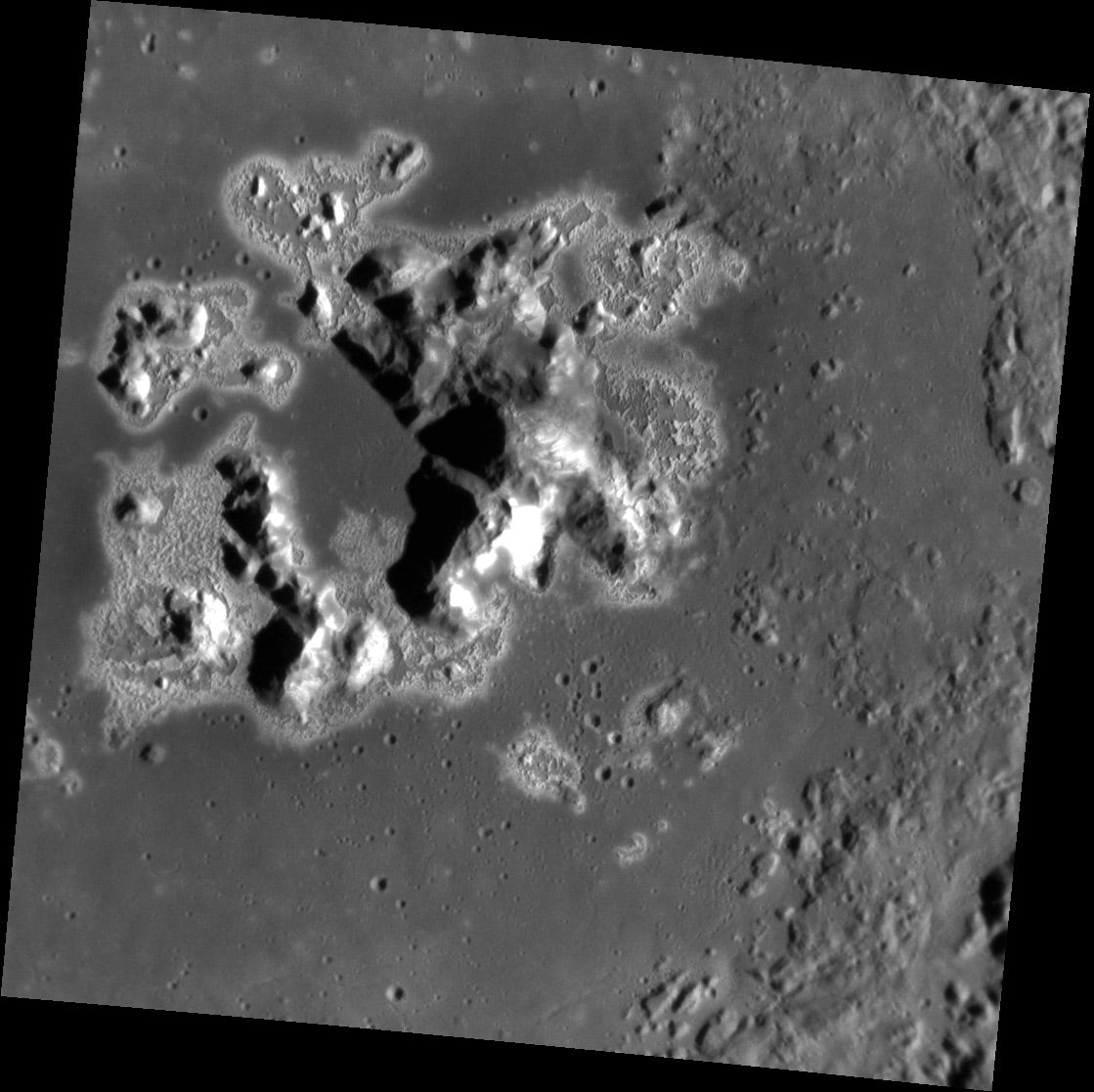
The history of Mercury’s volatile compounds is also inextricably tied to that of the planet’s atmosphere — what little remains of it.
Mercury’s first tenuous atmosphere came directly from the solar nebula, containing mostly hydrogen and helium. The Sun also contributed by blasting atoms off surface rocks. Volcanic eruptions further added to the diaphanous layer of thin gases as the planet matured. But Mercury’s magnetic field and weak gravity could not hold on to the thin, hot air, and soon only a trace remained — a loosely bound layer of gas that scientists refer to as an exosphere.
As with the other terrestrial planets, Mercury lost its initial atmosphere quite early in its development, leaving scientists to try to piece together its complicated history. “Knowing what it may or may not have been doing in the past is not an easy thing,” says Ron Vervack, a planetary atmospheres researcher at Johns Hopkins University’s Applied Physics Lab in Laurel, Maryland. “I think I can pretty safely say that it never had anything like a martian atmosphere in terms of either pressure levels or global presence.”
Vervack suggests that even in its prime, Mercury’s atmosphere may have been a somewhat transient feature, produced when the young planets were bombarded by asteroids and comets left over from the solar system’s formation. “You could imagine that a bunch of comets raining down on Mercury might have led to temporary mini-exospheres at places where a comet struck Mercury,” he says. At that position, water vapor mixed with other compounds like carbon monoxide and carbon dioxide would form a temporary local exosphere over the region and eventually disperse.
According to Vervack’s research, some of this gas would make its way to the poles, settling into the permanently shadowed regions in deep crater floors and valleys. There, it could have been preserved in the form of the ice deposits we see today. In that sense, the polar deposits are very likely the remnants of Mercury’s earliest exosphere.
Today, the planet stands as a battered world offering us a rich chronicle of the early solar system. Its exosphere contains 42 percent oxygen, 29 percent sodium, 22 percent hydrogen, 6 percent helium, and traces of potassium, argon, neon, carbon dioxide, water, nitrogen, xenon, and krypton. Many of these ancient elements may play a role in the formation of the hollows.
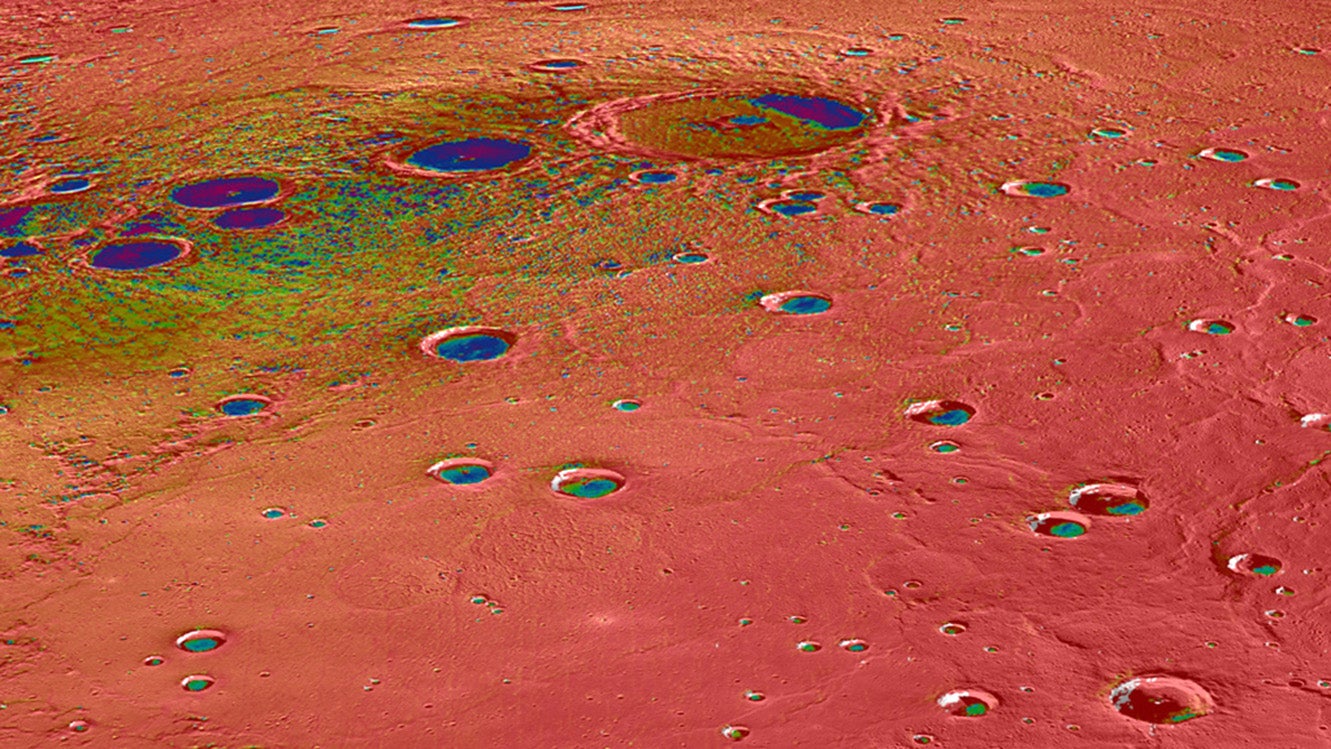
Misty glows
In Washington Irving’s short story “The Legend of Sleepy Hollow,” the author describes a Dutch-settled valley as a shadowy glen with a haunted atmosphere. Mercury’s hollows are also places of mystery haunted by unseen forces.
“Hollows are just strange,” says Vervack. He envisions a fascinating vista above the hollows near twilight, as volatiles waft into the sky and replenish the planet’s exosphere. “The exosphere glows in various colors and shapes owing to how it is generated and which atomic species comprise it,” Vervack explains. “The sodium glows with the same color that sodium streetlamps do on Earth — that sort of yellowish-amber color.”
The sodium that evaporates to form hollows is a contributor to one of Mercury’s most curious features — its cometlike sodium tail, which extends away from the Sun (anti-sunward) for 15 million miles (24 million km). “When the sodium tail is extended anti-sunward strongly, you would easily see [it] in the night sky,” says Vervack. “Imagine being on the equator at midnight. The sodium atoms stream around from the dayside all around the terminator in the anti-sunward direction, so you would see this yellowish glow near the horizon in all directions.”
Sodium is not the only actor on the Mercury sky stage. Calcium would season the sky with a violet glow. Its light is strongest at dawn because this is the direction in which Mercury moves through interplanetary dust. “The wispy vapor over the hollows wouldn’t glow at night, but would perhaps be visible in the predawn hours,” Vervack says.
These fluorescent glows would paint the sky above the planet’s depressions a ghostly green and purple — a display that must only add to the unusual enigma of Mercury’s sleepy hollows.









